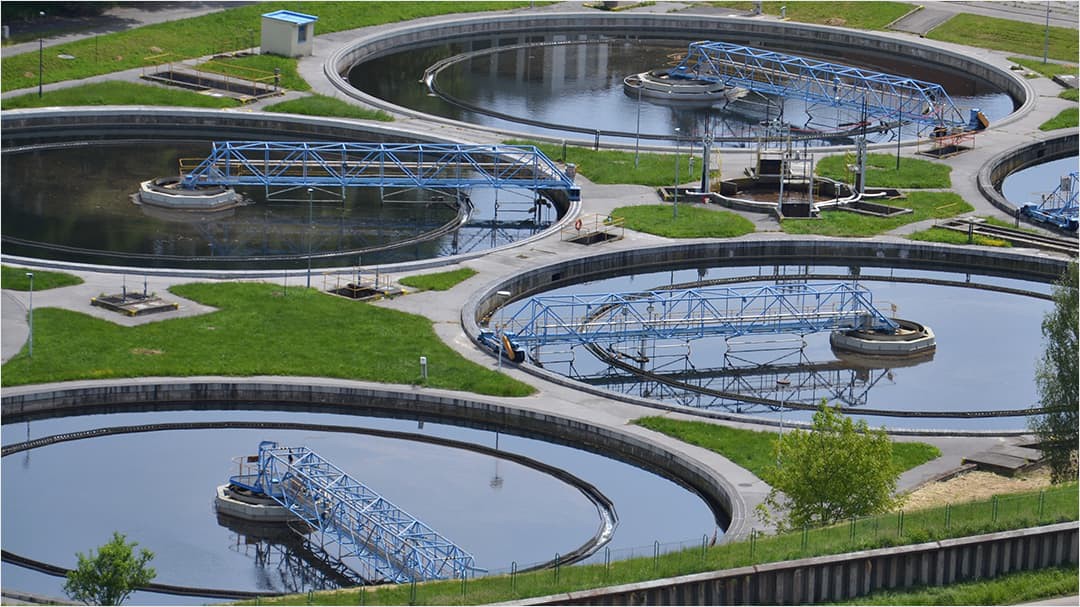USER STORY
Water Giant a Hub of Innovation
Determined to improve its decision-making capabilities and create efficiencies across the business, Queensland Urban Utilities (QUU)—Australia's fourth-largest water distributor and retailer—recognized that the key lies in providing its personnel with easier and greater access to data.
With location playing a central role in virtually all QUU's operational and customer service operations, the organization looked to geographic information system (GIS) technology to create a new way to view, manage, and process its vast reservoirs of data.
The solution was Q-Hub—a platform that seamlessly integrates QUU's core business systems to provide a comprehensive, spatially enabled snapshot of the entire QUU network at any given time.
QUU's business units—including customer service, operations, asset management, and incident management—can now access real-time data feeds, historical and current asset and works information, and accurate customer data through four custom-built, interactive mapping portals.
Tailored to the specific needs of each business unit, these portals enable QUU's existing legacy systems to communicate with one another in a way not previously possible.
Ultimately, by providing instant, easy access to all key organizational data, Q-Hub empowers QUU to improve decision-making across the board, from determining where to assign field crews conducting maintenance checks to highlighting areas for potential business expansion.

QUU—Australia's fourth-largest water distributor and retailer—supplies drinking water, recycled water, and sewerage services to South East Queensland residents in the Brisbane, Ipswich, Lockyer Valley, Scenic Rim, and Somerset local government areas.
The company delivers these services via a US$3.6 billion infrastructure network that includes 125 water reservoirs, 40 water pump stations, 110 water boosters, 331 sewage pump stations, 27 wastewater treatment plants, and nearly 20,000 km of water and sewerage mains. The company also answers more than 24,000 written inquiries and 290,000 customer phone calls a year.
The exciting thing about Q-Hub is that it has created an awakening within the organization. Our staff, many of them nontraditional spatial users, can now clearly see the technology's value.

The Challenge
Providing its staff—particularly those working in customer service, operations, asset management, and incident management business units—with timely access to key business information was a challenge for QUU, which operated a number of disparate legacy technology systems that were not designed for interoperability.
Staff often needed to manually extract and analyze information from multiple programs. At times, this compromised their ability to respond efficiently during emergency situations—such as when a water main burst—delaying the dispatch of maintenance crews and hindering communications with affected customers. This resulted in heavy water and revenue losses and a large number of complaints from customers dissatisfied with the extended outages and lack of information.
QUU recognized that greater coordination between its technology systems was essential to providing personnel with the information they required to effectively complete their work and make better decisions.
Specifically, QUU required an enterprise-wide solution that would:
- Provide all personnel with rapid access to valuable asset and network information and an up-to-date understanding of the status of QUU's network.
- Facilitate greater automation in the compilation and analysis of information to enable standardized and efficient decision-making in the areas of network planning, investment, operations, asset management, and customer service.
- Improve stakeholder engagement by being able to provide advance notice of when and where outages will occur in the case of planned works, and accurate and timely updates when unplanned incidents take place.
- Enhance and maintain the integrity of QUU's data.
User
Queensland Urban Utilities
Solutions Mix
- Esri Australia Professional Services
- ArcGIS Desktop
- ArcGIS Server
The Solution
QUU partnered with Esri Australia's Professional Services team to develop a geoenabled, centralized system that integrates the company's various legacy systems—including operations, works, planning, and asset management.
Instead of simply replacing QUU's existing systems, the solution—Q-Hub—is a new spatial environment that provides QUU with a common operating picture to view and manage its asset and network information.
Q-Hub features four service hubs—built around fit-for-purpose, interactive maps designed for each of QUU's targeted business areas—including the following:
- Q-Ops: Enables Control Center operators to search, view, and filter work orders, network information, and asset histories to optimize the coordination of field maintenance crews and works.
- Q-Care: Provides the Customer Contact Center with easy access to customer and property-related information, allowing staff to proactively manage inquiries and communicate with customers. For example, Q-Care delivers a complete and accurate view of the customers affected by network outages, providing staff and customers with precise and up-to-date information on their status.
- Q-Plan: Provides planning teams with multidimensional information, including elevation contours, flood levels, supply and drainage zones, and current and historical work orders. The consolidation of this information supports investigations, maintenance, and network planning decisions.
- Q-Alert: A central hub for incident and emergency management teams. In addition to providing a combined view of all other service hubs, this system integrates external data, including weather and climate information, to assist staff in case of an emergency.
The Innovations
Real-time intelligence QUU is at the forefront of a shift among water utilities—away from traditional system architectures to more integrated and responsive programs backed by advanced real-time analytics. More specifically, Q-Hub is unique, as it integrates previously disconnected information to deliver a single and live geographic view of the entire network. While in the past it may have taken a week for data collected in the field to be widely accessible to office-based staff, this information can now be updated and accessed in real time. Viewing information spatially also allows QUU's staff to visualize their data, identify anomalies, and draw inferences in ways previously not possible. For example, Q-Hub empowers staff to identify service usage hot spots in the network, or areas where there are multiple jobs affecting a variety of customers, which could potentially indicate a wider issue requiring further action. A new data model to suit current business processes The highly adaptable model works with existing systems, eliminating the need to undertake an expensive replacement program while also ensuring that the integrity of historical data is maintained and migrated into the new system. The new model enables QUU personnel to easily access both historical and current business data to support day-to-day and strategic decision-making. |
In the past, there could have been a 24-hour or even week-long lag between events in the field and details becoming widely accessible back in the office. Now, this information arrives in real time.
The Results
Real-time view of data: The system provides QUU's operational staff with a real-time view of network operations via interactive, easy-to-understand maps. A real-time view equips QUU staff with current information needed to make informed decisions, such as the ability to identify and assign field crews based on proximity, skill sets, and equipment on board. Further, having a real-time view of the operations has reduced the time required to identify faults in the network from minutes to just seconds.
Enhanced customer service: The system enables QUU's Control Center to quickly identify the exact customers impacted by both planned and unplanned incidents and to facilitate timely and efficient notifications. It also supports the Customer Contact Center to respond appropriately to customer inquiries with accurate and up-to-date information.
Increased maintenance and upgraded efficiencies: By analyzing historical data on job histories and network incidents, QUU's Network Control teams can identify clusters of locations with common issues and develop broad-based mitigation solutions in the event of future outages
Enhanced executive decision-making: For QUU executives in particular, Q-Hub allows future maintenance and operational areas to be analyzed and forecasted more accurately.
There is no doubt Q-Hub has bound the organization together. Understanding location and accessing a visual representation of what's happening in our business is extremely powerful.